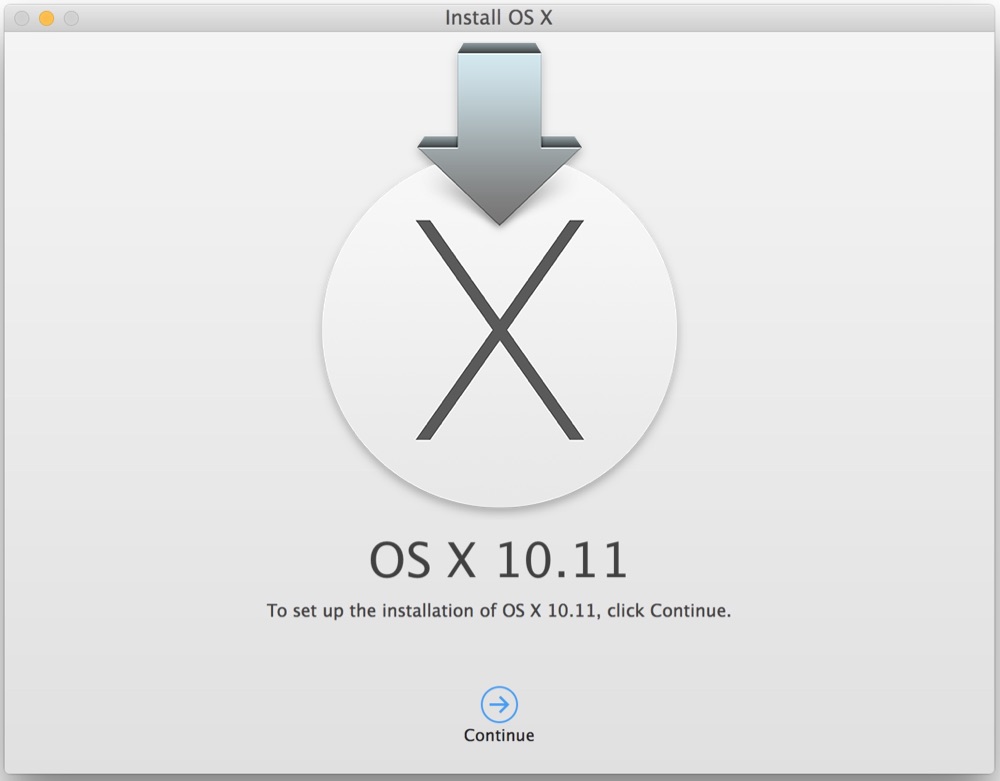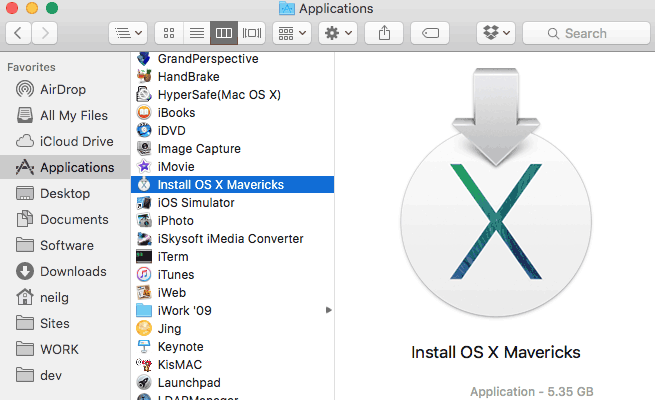These advanced steps are primarily for system administrators and others who are familiar with the command line. You don't need a bootable installer to upgrade macOS or reinstall macOS, but it can be useful when you want to install on multiple computers without downloading the installer each time.
Follow the guide here to create a bootable USB drive to install OS X 10.11 El Capitan. Select UEFI Boot Mode in UniBeast. Replace EFI/Clover/config.plist on the USB with this config.plist. Place one of each kext from the folders in EFI/Clover/Kexts/ into into EFI/Clover/Kexts/Other. Delete all folders in EFI/Clover/Kexts except Other. Incl Bootable USB. Mac OS X El Capitan 10.11.3 ( 15D21) Incl Bootable USB: Content. Magnet links are easy to use if you have a good BitTorrent client. We recommend using uTorrent because it has full support for these links. Just click on the download link (magnet icon) of your choice, and your browser should automatically open up your default. Sep 24, 2021 The app will offer to make installers for OS X 10.9, 10.10, and 10.11, and it. Create Bootable USB for Mac OS X El Capitan with TransMac A new pop up box will appear, click on the three-dots, and then select the macOS X El Capitan.DMG file from Windows. Then click on OK. Choose Mac OSX El Capitan DMG file.
What you need to create a bootable installer
- A USB flash drive or other secondary volume formatted as Mac OS Extended, with at least 14GB of available storage
- A downloaded installer for macOS Big Sur, Catalina, Mojave, High Sierra, or El Capitan
Download macOS
- Download: macOS Big Sur, macOS Catalina, macOS Mojave, or macOS High Sierra
These download to your Applications folder as an app named Install macOS [version name]. If the installer opens after downloading, quit it without continuing installation. To get the correct installer, download from a Mac that is using macOS Sierra 10.12.5 or later, or El Capitan 10.11.6. Enterprise administrators, please download from Apple, not a locally hosted software-update server. - Download: OS X El Capitan
This downloads as a disk image named InstallMacOSX.dmg. On a Mac that is compatible with El Capitan, open the disk image and run the installer within, named InstallMacOSX.pkg. It installs an app named Install OS X El Capitan into your Applications folder. You will create the bootable installer from this app, not from the disk image or .pkg installer.
Use the 'createinstallmedia' command in Terminal
- Connect the USB flash drive or other volume that you're using for the bootable installer.
- Open Terminal, which is in the Utilities folder of your Applications folder.
- Type or paste one of the following commands in Terminal. These assume that the installer is in your Applications folder, and MyVolume is the name of the USB flash drive or other volume you're using. If it has a different name, replace
MyVolumein these commands with the name of your volume.

Big Sur:*
Catalina:*
Mojave:*
High Sierra:*
Truck driving games. El Capitan:

* If your Mac is using macOS Sierra or earlier, include the --applicationpath argument and installer path, similar to the way this is done in the command for El Capitan.
After typing the command:
- Press Return to enter the command.
- When prompted, type your administrator password and press Return again. Terminal doesn't show any characters as you type your password.
- When prompted, type
Yto confirm that you want to erase the volume, then press Return. Terminal shows the progress as the volume is erased. - After the volume is erased, you may see an alert that Terminal would like to access files on a removable volume. Click OK to allow the copy to proceed.
- When Terminal says that it's done, the volume will have the same name as the installer you downloaded, such as Install macOS Big Sur. You can now quit Terminal and eject the volume.
Use the bootable installer

Determine whether you're using a Mac with Apple silicon, then follow the appropriate steps:
Apple silicon
- Plug the bootable installer into a Mac that is connected to the internet and compatible with the version of macOS you're installing.
- Turn on your Mac and continue to hold the power button until you see the startup options window, which shows your bootable volumes.
- Select the volume containing the bootable installer, then click Continue.
- When the macOS installer opens, follow the onscreen instructions.
Intel processor
- Plug the bootable installer into a Mac that is connected to the internet and compatible with the version of macOS you're installing.
- Press and hold the Option (Alt) ⌥ key immediately after turning on or restarting your Mac.
- Release the Option key when you see a dark screen showing your bootable volumes.
- Select the volume containing the bootable installer. Then click the up arrow or press Return.
If you can't start up from the bootable installer, make sure that the External Boot setting in Startup Security Utility is set to allow booting from external media. - Choose your language, if prompted.
- Select Install macOS (or Install OS X) from the Utilities window, then click Continue and follow the onscreen instructions.
Learn more
A bootable installer doesn't download macOS from the internet, but it does require an internet connection to get firmware and other information specific to the Mac model.
For information about the createinstallmedia command and the arguments you can use with it, make sure that the macOS installer is in your Applications folder, then enter the appropriate path in Terminal:
Recently, I upgraded my Macbook Pro with a SSD and installed the latest Mac OS X v10.11 El Capitan to improve the overall device performance. Though, you can easily upgrade your Mac OS directly from the App store but in case you’re performing a clean install or want to install OS X El Capitan on multiple Macs then you need to have a bootable installer of the OS. There are certainly a lot of articles available across the web stating the applicable procedure to perform the desired task. But those require you to first format the USB flash drive using Disk Utility and manually run few commands via Terminal app which we feel isn’t the most convenient way for basic users.
El Capitan Os X Download
Well, we’ve found a simple and intuitive app ‘El Capitan USB‘ for OS X that allows you to quickly create a bootable installer for OS X 10.11 El Capitan on your USB device. Using it, one can easily create El Capitan USB flash drive installer in a few clicks without the need to manually format the drive or running any commands. The app automatically checks the required disk space and warns you if it is insufficient.

Now let us guide you through the requirements and the relevant steps:
Required: A 8GB or larger USB flash drive/ Pen drive (Make sure it has NO important data as the drive needs to be formatted).
1. Download OS X El Capitan from the Mac App Store. Quit the installer if it opens automatically after downloading. The installer will be in your Applications folder.
2. Download El Capitan USB, extract it to a folder and run it. Select the USB device on which you want to install El Capitan. Then click on Transfer. Install flash player 12 osx.dmg.
3. The app will format your USB device in the “Mac OS Journaled” format and will copy all the files needed to boot from the device.
Now wait until the process is finished. NOTE: The operation can take upto 30 minutes, so be patient! You’ll get a notification when the process gets completed.
Can You Still Download Os X El Capitan
That’s it! To boot your Mac from the USB installation drive, simply reboot your system and hold down the ‘Option’ key while it’s restarting to install El Capital from your bootable flash drive.